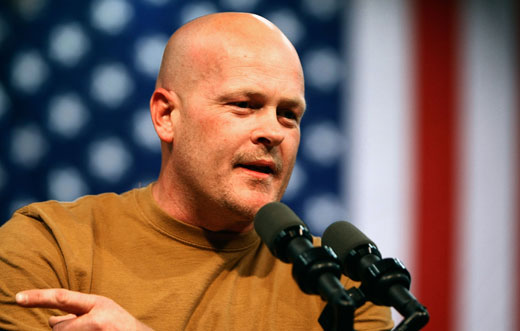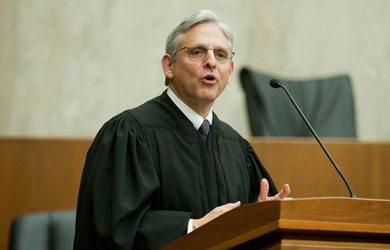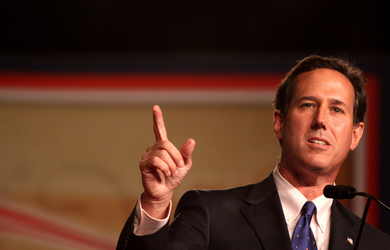Yesterday, the Judicial Confirmation Network’s Wendy Long demanded that the White House release the full video of Sonia Sotomayor’s remarks in which she stated that the “court of appeals is where policy is made”:
“An important controversy and debate continues to brew over Judge Sotomayor’s comments at Duke University in which she said that appellate courts “make policy,” and in her published words tucked away in law review articles … [W]e are calling on White House Press Secretary Gibbs to post the Duke University video on The White House web site and let the American people judge her comments.
I ignored this at the time because it was an blatant attempt to generate controversy where none exists, with JCN insinuating that the White House was somehow trying to hide the complete video from the public.
Of course, it’s not and Media Matters posted a link to it several days ago (you can get the webcast here) and a more complete transcript of her remarks, which makes it clear that Sotomayor was making a distinct and utterly non-controversial point about the difference between the roles of district and circuit courts:
SOTOMAYOR: The saw is that if you’re going into academia, you’re going to teach, or as Judge Lucero just said, public interest law, all of the legal defense funds out there, they’re looking for people with court of appeals experience, because it is — court of appeals is where policy is made. And I know — and I know this is on tape and I should never say that because we don’t make law, I know. OK, I know. I’m not promoting it, and I’m not advocating it, I’m — you know. OK. Having said that, the court of appeals is where, before the Supreme Court makes the final decision, the law is percolating — its interpretation, its application. And Judge Lucero is right. I often explain to people, when you’re on the district court, you’re looking to do justice in the individual case. So you are looking much more to the facts of the case than you are to the application of the law because the application of the law is non-precedential, so the facts control. On the court of appeals, you are looking to how the law is developing, so that it will then be applied to a broad class of cases. And so you’re always thinking about the ramifications of this ruling on the next step in the development of the law. You can make a choice and say, “I don’t care about the next step,” and sometimes we do. Or sometimes we say, “We’ll worry about that when we get to it” — look at what the Supreme Court just did. But the point is that that’s the differences — the practical differences in the two experiences are the district court is controlled chaos and not so controlled most of the time.
If JCN had bothered to do any basic research, they would have known about this webcast days before they issued their demand to the White House … and White House spokesman Robert Gibbs would have been saved from this inane exchange with a reporter during yesterday’s press briefing:
Q Given what you said about keeping Judge Sotomayor’s previous remarks in context … For example, the YouTube video of her remarks at Duke and the speech at Berkeley — has the White House considered releasing those full YouTube videos to urge people to watch them in context, for example, on whitehouse.gov, or transcripts as Judicial Confirmation Network is challenging you to do?
MR. GIBBS: Go to Google, type in a couple of key words, hit enter, it pops up.
Q We could also get, let’s say, this briefing on video by doing that, but you guys post it on the White House YouTube —
MR. GIBBS: But I think the implication in your question, and I think the implication in the interest group making this, is that somehow these are some top-secret documents that are contained in some undisclosed location in or around the grounds of the White House. If you go to newyorktimes.com, and you’re a moderately good Googler like my five-and-three-quarter-year-old son, I have a sense that you and the interest group can find exactly what it is that they’re desirous to see.
Q And is that what you’re encouraging the American people to go look at it in context —
MR. GIBBS: Sure. Once the vault gets dug up from the front yard — this I think is symptomatic of exactly the type of game that you have already seen and that you’re likely to see. If somebody can find it on YouTube, if somebody — I don’t doubt that — they produced a commercial, if I’m not unfamiliar with this, that has some of this stuff in there.
Did we somehow give them the secret document in order for them to make the Internet commercial, so that they can then put out a press release asking us to release the secret document that they used to make the commercial” This is the sort of semantical dance that professional interest groups play that pop up like dandelions after a spring rainstorm when there’s a confirmation upcoming. Again, I think somebody with a dial-up Internet account can find said secret documents.
Gibbs is right – both of Sotomayor’s remarks at Duke and her speech at Berkley are readily available to anyone willing to spend a few minutes searching for them.
Perhaps people like Long and organizations like the Judicial Confirmation Network should spend a bit more time doing some basic research about Sotomayor instead of filling the airwaves and newspapers with their knee-jerk opposition.








